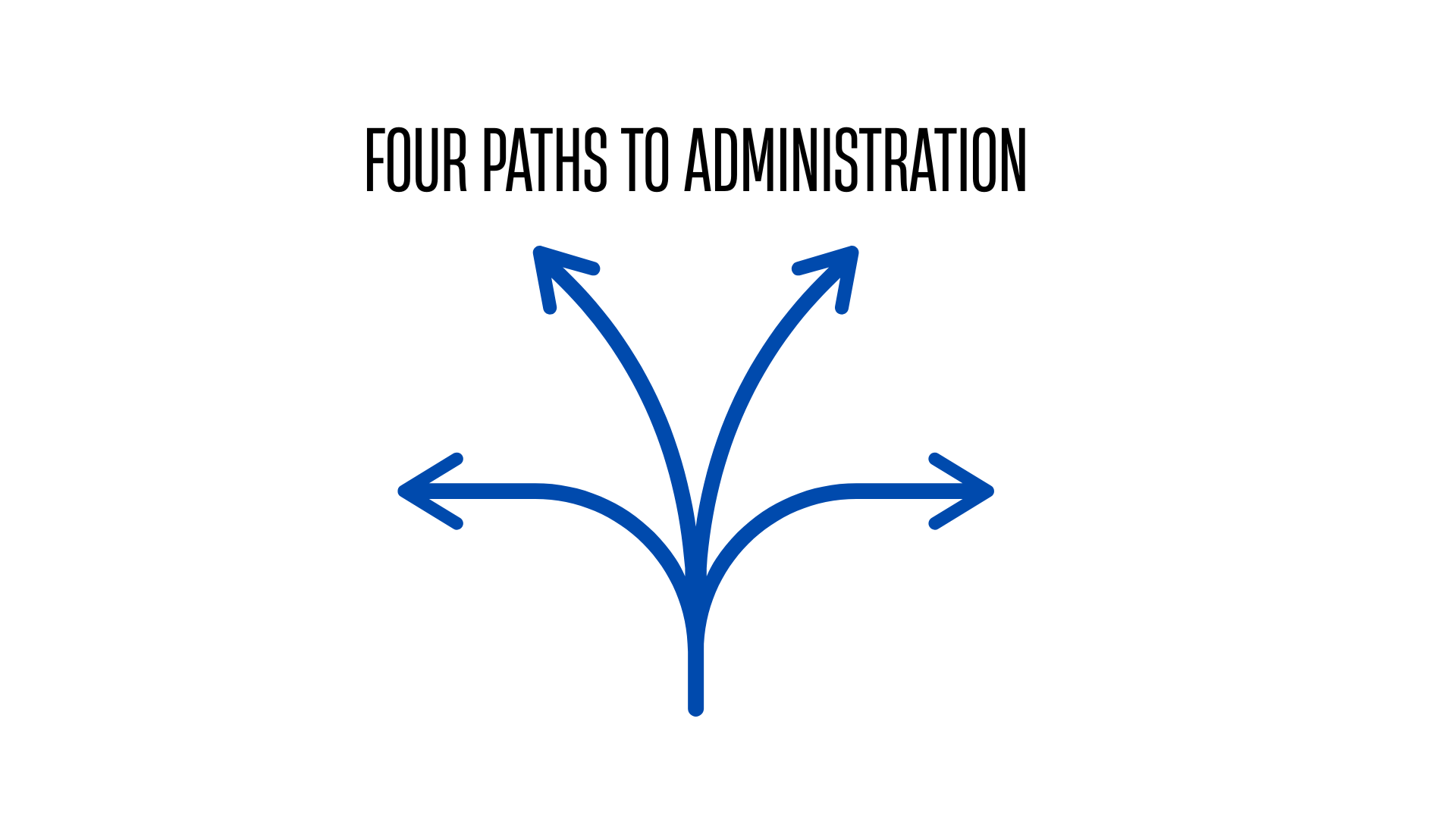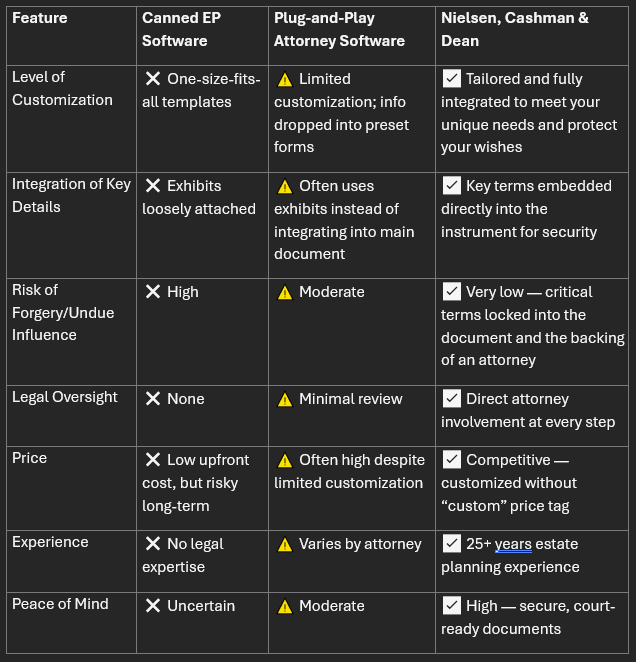STRAIGHT TALK WITH NIELSEN CASHMAN & DEAN
Our BLOG offers trusted legal insights on estate planning, elder law, conservatorships, probate, family law, and business matters. Whether you're planning for the future or navigating complex legal challenges, our attorneys share updates, tips, and guidance to help you make informed decisions with confidence.
The information provided on this blog is for general informational purposes only and does not constitute legal advice. Reading or interacting with this blog does not create an attorney-client relationship.
California’s SB 1427: A Smoother Path to Divorce
Through Joint Petitions Starting January 2026
Divorce can be emotionally and financially draining, especially when the legal process amplifies conflict. However, California is taking a significant step toward simplifying the dissolution of marriage for couples who are able to work together amicably.
Beginning January 1, 2026, Senate Bill 1427 (SB 1427) goes into effect, introducing the option for spouses to file a joint petition for dissolution of marriage. This marks a major shift in California family law, offering a streamlined and cooperative alternative to traditional adversarial divorce proceedings, one that was previously only available to candidates for summary dissolution (those with minimal assets, short marriage durations, and no children).
What Is a Joint Petition for Dissolution?
Under SB 1427, spouses who are in mutual agreement on all key aspects of their divorce may now file a single, joint petition, rather than each party hiring their own attorney and submitting competing filings. This collaborative approach avoids the unnecessary escalation of conflict and reduces legal costs, delays, and stress. There are no longer “opposing parties” - both partners are on equal footing before the court as joint petitioners.
Who Qualifies?
Couples who are pursuing an amicable divorce and can reach agreements on all critical matters will benefit most from this new procedure. The following elements will need to be resolved by written agreement:
1. Legal Grounds for Dissolution
- Typically, “irreconcilable differences” serve as the legal basis. Both parties must agree on this ground.
2. Date of Separation
- Establishing this date is important for financial and legal purposes, and it must be mutually acknowledged.
3. Child Custody and Visitation
- The agreement must include a complete parenting plan that addresses legal and physical custody, visitation schedules, and any co-parenting arrangements.
4. Child Support
- Must comply with California’s child support guidelines, unless both parties agree to deviate with court approval.
5. Spousal Support (Alimony)
- Whether support will be paid, for how long, and in what amount—all must be agreed upon and documented.
6. Division of Separate Property
- Each spouse retains their separate property, but both must clearly identify and agree on what constitutes separate versus community property.
7. Division of Community Property
- A complete, mutual agreement is required outlining how shared property, assets, and debts will be divided.
8. Restoration of Former Name
- If either party wishes to restore a former name, it must be included in the agreement.
9. Attorney’s Fees and Costs
- Who pays for what must be clearly defined and agreed upon.
One Attorney, Two Clients—How It Works
Perhaps the most significant procedural shift under SB 1427 is that it opens a pathway to allow a single attorney to represent both parties, provided that they continue to agree on all matters. Traditionally, ethical rules prohibited one attorney from representing both spouses in a divorce because the categorization of “petitioner” and “respondent” put the partners in opposing positions. But under this new model, we dare speculate that it opens up the possibility that a joint representation is permissible, as long as no conflict of interest arises and the couple maintains consensus throughout the process.
This reduces overall legal expenses and promotes a cooperative environment, as the attorney acts as a neutral facilitator rather than a traditional advocate for one party against another.
Benefits of the Joint Petition Process
- Lower Legal Costs: Potential that there may be no need for separate attorneys if parties remain in agreement.
- Faster Resolution: Joint petitions reduce court involvement and move through the system more efficiently.
- Less Stress: Eliminates the adversarial tone common in typical divorces.
- More Control: Couples design their own agreement and retain decision-making power rather than leaving it to a judge.
- Privacy: Minimizes the need for contested hearings or public court battles.
Potential Pitfalls and Financial Disclosure Concerns
While SB 1427 offers a promising and efficient path forward for amicable couples, it’s important to approach this new process with caution—especially when it comes to financial disclosures. Full and transparent disclosure of all assets, debts, income, and liabilities is a legal requirement in any divorce proceeding in California. However, in a joint petition where both parties could potentially be represented by the same attorney, there is a risk that one party may inadvertently or intentionally omit critical financial information, especially if the other spouse is less financially literate or disengaged from marital finances.
It is unclear if SB 1427 softens or eliminates the duty of disclosure. It is essential that both spouses independently verify the accuracy of all financial documents and ensure that no coercion or imbalance of knowledge undermines the fairness of the agreement. Without proper safeguards, couples may finalize agreements that are later deemed unfair or invalid, particularly if one spouse discovers hidden assets or feels pressured into agreeing to unfavorable terms.
As this new law rolls out, further judicial guidance and best practices will likely emerge to mitigate these risks. The details are still unknown about this process, and the Judicial Council will need to develop the procedural steps by January of 2026. In the meantime, couples should proceed carefully and consider using a neutral financial advisor or mediator alongside their attorney to help ensure a truly balanced and informed agreement.
Is This Right for You?
While SB 1427 offers a simplified pathway, it's not suitable for all couples. The joint petition process requires open communication, mutual respect, and full financial transparency. If there are power imbalances, safety concerns, or unresolved disputes, traditional representation and court intervention may still be necessary.
How Our Firm Can Help
We welcome this forward-thinking change in California family law. As we have always put an emphasis of conflict resolution in family law, our team is prepared to guide couples through the joint petition process with clarity, efficiency, and compassion.
If you and your spouse are ready to move forward amicably, we can help draft your written agreement, file the necessary paperwork, and ensure compliance with all legal requirements—without unnecessary conflict or cost.
Let us help you turn the page—peacefully and respectfully.



Medi Cal Long Term Care in 2025: Practical Planning for California Couples, Families, and Caregivers











